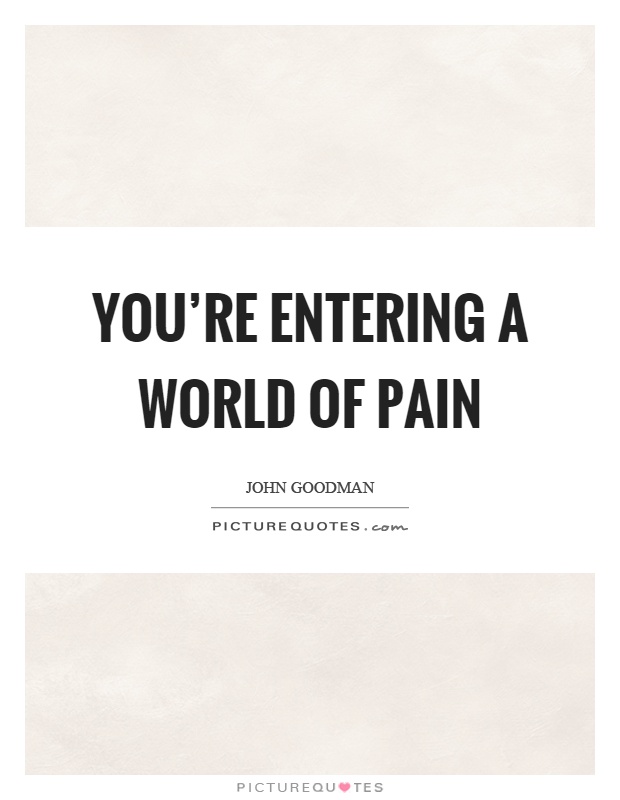You're Entering A World Of Pain

Imagine standing at the edge of a vast, uncharted territory. The air hums with a low, resonant frequency, a blend of anticipation and trepidation. Sunlight filters through the leaves, dappling the path ahead with an invitation to explore, yet a sense of profound responsibility settles upon your shoulders.
We are on the cusp of a transformative era in pain management, driven by innovations in neuroscience, personalized medicine, and a growing recognition of the biopsychosocial model of pain. This new frontier promises hope for millions suffering from chronic pain, offering alternatives to traditional approaches and paving the way for more effective, holistic treatments. The journey won't be without its challenges, but the potential rewards are immense.
The Shifting Landscape of Pain Management
For decades, pain management relied heavily on opioids and invasive procedures. While these treatments provided relief for some, they often came with significant side effects and the risk of addiction. According to the National Institutes of Health (NIH), over 20% of adults in the United States experience chronic pain.
This pervasive issue underscores the urgent need for more effective and safer strategies. The opioid crisis has further highlighted the limitations of current approaches and accelerated the search for alternatives. This search is where the current shift really starts.
The biopsychosocial model recognizes that pain is not simply a physical sensation but a complex interplay of biological, psychological, and social factors. This model informs a holistic approach to pain management, addressing not only the physical symptoms but also the emotional, cognitive, and behavioral aspects of the patient's experience. These concepts are not new, but rather newly recognized.
Understanding the Science of Pain
Neuroscience is revolutionizing our understanding of pain pathways and the brain's role in processing pain signals. Researchers are identifying specific targets for therapeutic intervention, leading to the development of novel medications and neuromodulation techniques. These new techniques are becoming increasingly viable.
For instance, studies are exploring the potential of gene therapy to modify pain-related genes and reduce pain sensitivity. Non-invasive brain stimulation techniques, such as transcranial magnetic stimulation (TMS), are showing promise in alleviating chronic pain by modulating brain activity. These are not hypothetical; these are currently in trials.
Furthermore, advances in neuroimaging are allowing clinicians to visualize brain activity in real-time, providing valuable insights into the mechanisms underlying chronic pain. This information can be used to personalize treatment strategies and monitor their effectiveness. Real time analytics of the brain is new and exciting.
Personalized Medicine: Tailoring Treatment to the Individual
Recognizing that each individual experiences pain differently, personalized medicine is gaining traction in pain management. This approach involves tailoring treatment strategies to the unique characteristics of each patient, taking into account their genetic makeup, medical history, lifestyle, and psychosocial factors.
Pharmacogenomics, for example, can help predict how a patient will respond to specific pain medications based on their genetic profile. This allows clinicians to select the most effective medications and minimize the risk of adverse effects. This is a large step in the right direction.
Similarly, personalized pain rehabilitation programs can be designed to address the specific needs and goals of each patient, incorporating elements of physical therapy, cognitive-behavioral therapy (CBT), and mindfulness training. It is a multi-faceted approach for a multi-faceted problem.
Integrative Approaches: Combining Conventional and Complementary Therapies
Integrative pain management combines conventional medical treatments with complementary therapies, such as acupuncture, massage therapy, yoga, and meditation. These therapies can help reduce pain, improve function, and enhance overall well-being. The combination is crucial.
The National Center for Complementary and Integrative Health (NCCIH) is supporting research to evaluate the effectiveness of these therapies in treating various pain conditions. Studies have shown that acupuncture, for instance, can be effective in relieving chronic back pain, neck pain, and osteoarthritis pain. These studies are constantly evolving and growing.
Mindfulness-based stress reduction (MBSR) has also been shown to reduce pain intensity, improve mood, and enhance coping skills in individuals with chronic pain. It is a fantastic alternative for those looking for one.
Challenges and Opportunities
Despite the promising advances in pain management, several challenges remain. Access to comprehensive pain care is often limited, particularly for individuals in rural areas and underserved communities. Insurance coverage for non-pharmacological treatments, such as physical therapy and CBT, can also be a barrier to care.
Furthermore, there is a need for more research to evaluate the long-term effectiveness of new pain management strategies. Clinical trials are essential to ensure that these treatments are safe and effective for a diverse range of patients. More data, always.
However, these challenges also present opportunities for innovation and collaboration. By working together, researchers, clinicians, policymakers, and patient advocates can create a more equitable and effective system of pain care. The work begins now.
The Role of Technology
Technology is playing an increasingly important role in pain management. Telehealth platforms are expanding access to pain specialists and allowing patients to receive care from the comfort of their own homes. This is a game changer.
Wearable sensors and mobile apps are being developed to monitor pain levels, track activity, and provide personalized feedback. These tools can empower patients to take control of their pain management and make informed decisions about their care. The more that technology and medicine merge, the more opportunities we see.
Virtual reality (VR) is also emerging as a promising tool for pain relief. VR experiences can distract patients from their pain, reduce anxiety, and promote relaxation. It is a truly incredible technology.
A Future of Hope and Healing
The journey into this new world of pain management requires a shift in perspective, embracing a more holistic and personalized approach. It demands a commitment to innovation, collaboration, and patient-centered care. We must always keep that in mind.
By investing in research, expanding access to care, and empowering patients to take an active role in their treatment, we can create a future where chronic pain is no longer a barrier to living a full and meaningful life. Hope is not lost.
As we step forward, let us do so with compassion, understanding, and an unwavering commitment to alleviating suffering and improving the lives of those who live with pain. The future is now.


















